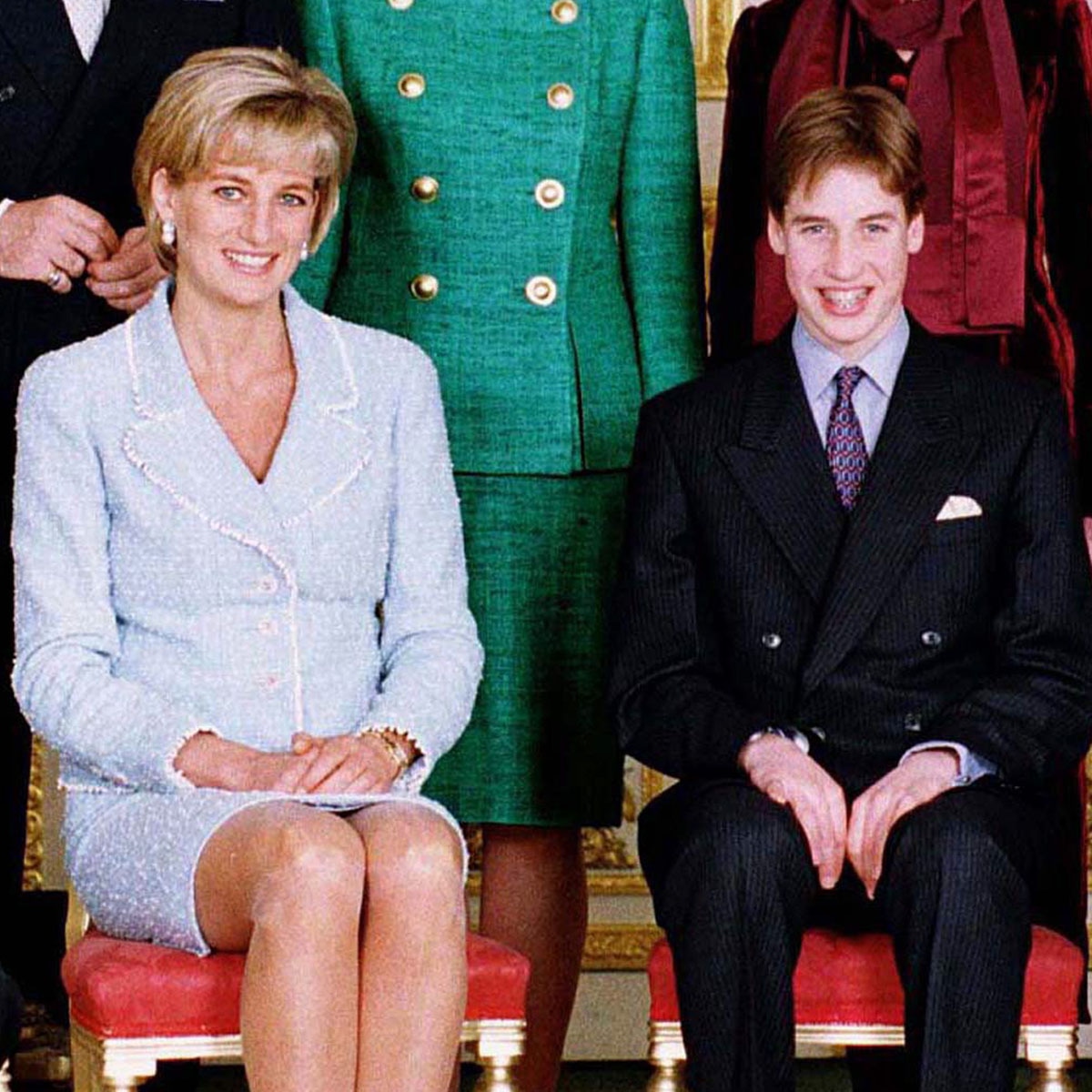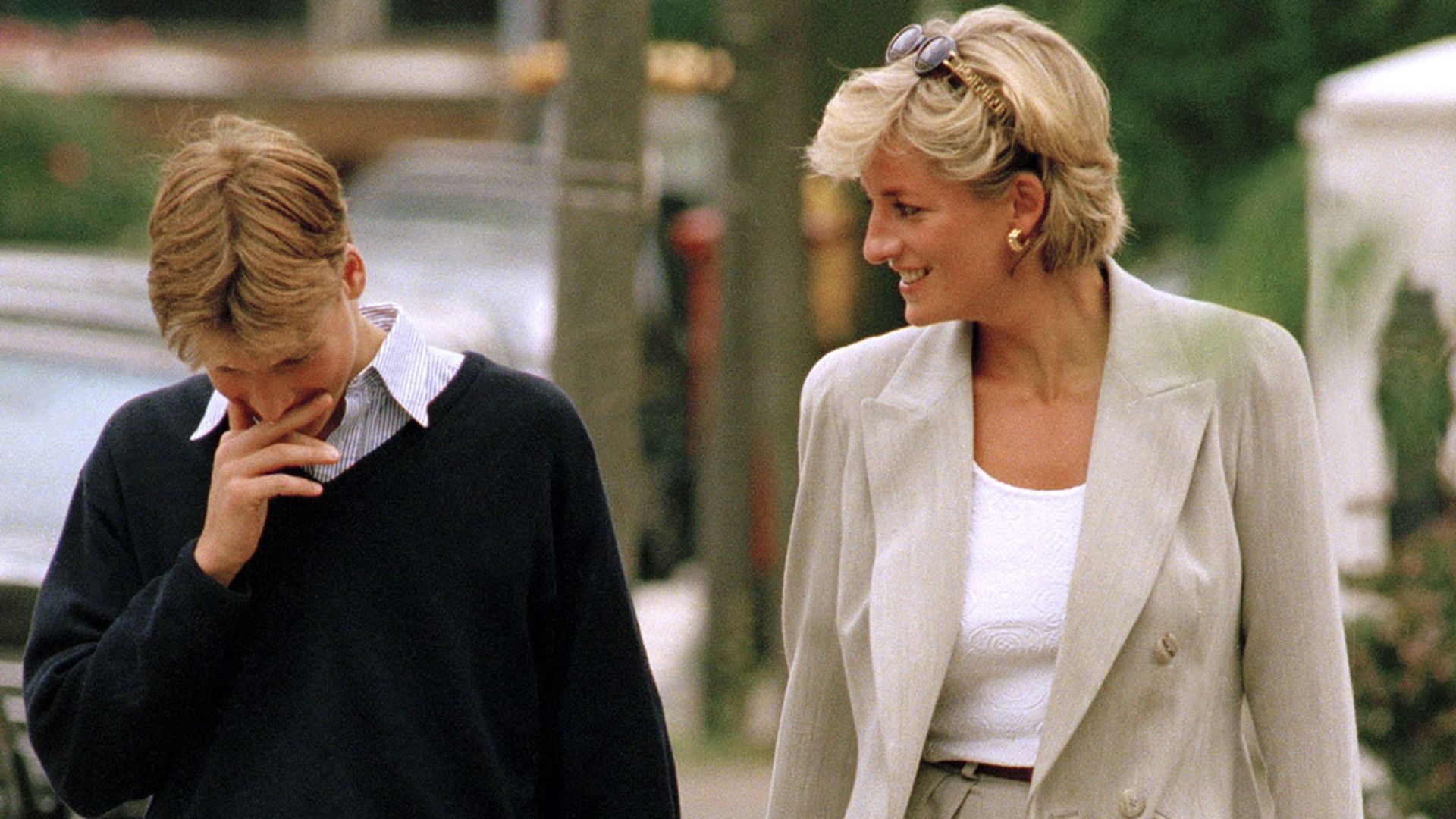
For centuries, the enduring mantra of the British Monarchy was the “stiff upper lip”—an unwavering commitment to emotional stoicism, dictating that personal pain and private grief must never intrude upon public duty. Yet, in the face of immense personal loss and a changing cultural landscape, Prince William, the future King, has consciously chosen to break this archaic mould. His intentional embrace of vulnerability is not a weakness, but a profound act of modern leadership and a constant, silent tribute to his late mother, Diana, Princess of Wales.
This deliberate shift was perhaps never more starkly illustrated than during a recent engagement marking World Mental Health Day. New, heartbreaking footage captured the Prince of Wales, the very embodiment of the royal institution, being visibly moved to tears while speaking with a grieving mother. This public display of empathy, rooted in his own childhood trauma, underscores how his personal journey has become inextricably linked with his public mission, echoing the compassionate spirit of the ‘People’s Princess’ whose legacy he carries forward.
The Cracking of the ‘Stiff Upper Lip’
The tradition of royal stoicism served a specific purpose: projecting stability, continuity, and unshakeable resilience, particularly during periods of national crisis. From Queen Victoria’s long mourning to Queen Elizabeth II’s quiet dignity throughout World War II and countless crises thereafter, the monarchy’s strength was perceived to lie in its emotional distance.
Prince William, however, was thrust onto the world stage at age 15 by a catastrophic event—the death of his mother, Princess Diana. His youth, coupled with the profound and public nature of his grief, made the traditional adherence to the ‘stiff upper lip’ impossible, perhaps even detrimental. He was forced to navigate the intensely scrutinized demands of public life while processing unimaginable loss. This experience fundamentally reshaped his view of duty, teaching him that true strength often requires breaking silence, not maintaining it.
His commitment to modernising this dynamic became clear through his extensive work in mental health advocacy, particularly with the Heads Together campaign launched with his wife, Catherine. This work is not merely a philanthropic cause; it is a deeply personal mandate that links his royal service directly to the central tragedy of his life.
:max_bytes(150000):strip_icc():focal(749x0:751x2)/princess-diana-prince-william-prince-harry-0-082925-8d397ef8966844c99ac28433daf15865.jpg)
A Moment of Unvarnished Truth
The raw power of William’s empathetic leadership was fully displayed during his conversation with Rhian Mannings, a mother whose husband, Paul, took his own life just days after their one-year-old son died.
Listening to Rhian recount her husband’s suffering and her subsequent anguish, William’s usual composure faltered. As Rhian spoke of her desperate wish that Paul had simply opened up to her, saying, “I think that’s what the hardest thing is… we would have been OK,” the future King’s voice broke. He momentarily squeezed his eyes shut, a universally recognized attempt to fight back the overwhelming tide of emotion.
This wasn’t scripted sympathy. This was shared trauma.
When William hears a parent or child speak of sudden, devastating, and preventable loss, he is not just hearing a constituent; he is hearing the echo of his own experience. His reaction is a powerful, non-verbal acknowledgment of the same isolating pain he faced. For the future monarch to permit this momentary lapse in royal formality—to allow his grief and compassion to surface publicly—sends a seismic message to the millions struggling with mental health issues: even those in the highest positions are not immune to pain, and it is acceptable to show it.

The Unmistakable Echoes of Diana
William’s dismissal of royal stoicism is far from a unique phenomenon within the family; rather, it is a continuation of the groundbreaking style initiated by Princess Diana. Commonly referred to as the ‘People’s Princess,’ Diana became globally adored for her ability to forge immediate, authentic connections with individuals, embracing an empathy that often flouted established royal distance.
Diana deliberately broke boundaries, most famously by touching AIDS patients at a time when fear and misinformation ruled, and by sitting on beds with the infirm. She was comfortable with, and often overwhelmed by, the pain she witnessed. When she visited Ashworth Hospice in Liverpool in 1992, powerful images showed her fighting back tears as she left the building. This vulnerability was her currency—it made her human, accessible, and profoundly relevant.
William understands that this legacy is his greatest royal asset. When he speaks about the importance of talking about feelings, or when he offers comfort to those who have lost loved ones, he is channeling his mother’s most celebrated characteristic. He is taking Diana’s legacy of compassionate action and embedding it within the rigid structure of the Monarchy itself.
The moments when William’s voice catches or his eyes moisten are, in essence, his quiet conversation with his late mother—a promise kept that the work she began will continue, and that love and empathy will supersede outdated formality.
:max_bytes(150000):strip_icc():focal(749x0:751x2)/royal-family-at-eton-082925-e945138c6d0a42f194374e57fbf5ca96.jpg)
Redefining the Monarchy for a New Age
In the 21st century, the survival and relevance of the Monarchy depend less on the projection of invulnerability and more on the ability to reflect the values and anxieties of its people. Prince William’s commitment to emotional openness is a calculated, strategic choice to future-proof the Crown.
By prioritizing mental health and advocating for vulnerability, he is engaging with the public on topics that dominate contemporary discourse. He is showing that the Monarchy can be a catalyst for social change rather than a relic of tradition.
His actions are helping to create a new model for leadership—one where resilience is defined not by how well one suppresses emotion, but by the courage to confront it, speak about it, and use it as a bridge to connect with others.
The image of William fighting back tears with Rhian Mannings may appear on the surface to be a fleeting, personal moment. Yet, within the narrative of the House of Windsor, it is a significant historical marker—a public declaration that the future King will rule with his heart as well as his head. This commitment ensures that the enduring legacy of Princess Diana’s empathy will not only survive but thrive at the very highest echelons of the Monarchy, making the Crown feel closer, more relevant, and more human than ever before.
In these heartfelt moments, William is not only paying a tribute to his mother but is confirming to a nation that her work—and her profound ability to connect—remains at the heart of the future reign.




